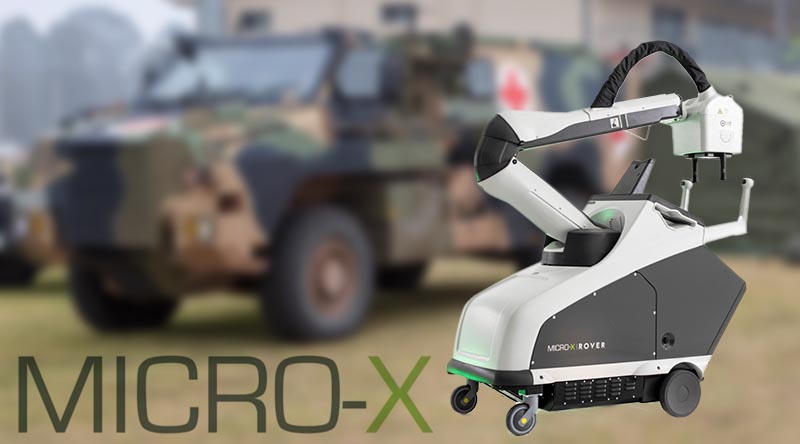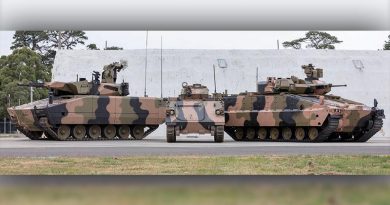Hospital-grade X-rays available for field hospitals – innovation award winner
Share the post "Hospital-grade X-rays available for field hospitals – innovation award winner"

Adelaide company Micro-X has won the Land Forces 2021 National Innovation Award for inventing and manufacturing Rover, a lightweight go-anywhere X-ray machine ruggedised and optimised for high intensity use in field hospitals and remote locations.
CAPTION: Micro X Rover, deployable X-ray machine. Background photo by Sergeant Bill Solomou.
Military doctors aim to provide combat soldiers who go in harm’s way with no less a standard of medical care than they can expect at home – however, conventional hospital-grade mobile X-ray machines are heavy (typically 400 to 600kg), power hungry and very hard to move around on uneven surfaces.
So, before Rover’s development, only small-animal veterinary X-ray units were light enough to be deployed by military forces.
Micro-X Managing Director Defence Peter Rowland said the company was looking for ways to bring the standard of deployable imaging up to that of first-tier acute hospitals and, in 2016 we were contracted to see if their unique CNT X-ray technology could achieve that.
“The tests were completely successful and we showed that we could meet all the general radiology needs of a NATO Role 3 deployed medical facility,” Mr Rowland said.
“Product development followed trials at Enoggera Barracks in Queensland and with the US Army at Fort Detrick in Maryland.
“We released Rover in 2020.
“Now we are under contract to supply Rover into the ADF’s new deployable medical facility as part of JP2060 – Phase 3 and the World Health Organisation has also bought Rovers for use in Pacific nations.
“We have FDA clearance and now our sights are on selling to other armed forces’ deployable hospitals, particularly the US where we will be conducting evaluation trials on bases later this year.”
Rover weighs just 95kg, operates for 10 hours with a 5kg battery pack, has a high ground clearance and is ruggedised for military use.
It uses state-of-the-art materials science to improve weight and performance, such as X-ray shielding using a tungsten-filled polymer instead of lead, and a carbon fibre monocoque chassis.
The patented technology that makes Rover possible is inside the 1.5kg X-ray tube which replaces a conventional X-ray tube weighing more than 20kg.
Traditional X-ray tubes use a hot filament, like an old-fashioned light bulb, to generate the electron stream needed to make X-rays, but Micro-X’s technology applies voltage to an emitter made from carbon nanotubes (CNT) to generate the stream of electrons – more like an LED, with similar energy efficiency and life expectancy.
Not only are the devices much lighter, they produce a beam that can be controlled instantly and precisely by simply adjusting the voltage.
The innovation award will be presented to Micro-X at Land Forces Brisbane expo in June.
.
.

.
.
Share the post "Hospital-grade X-rays available for field hospitals – innovation award winner"





